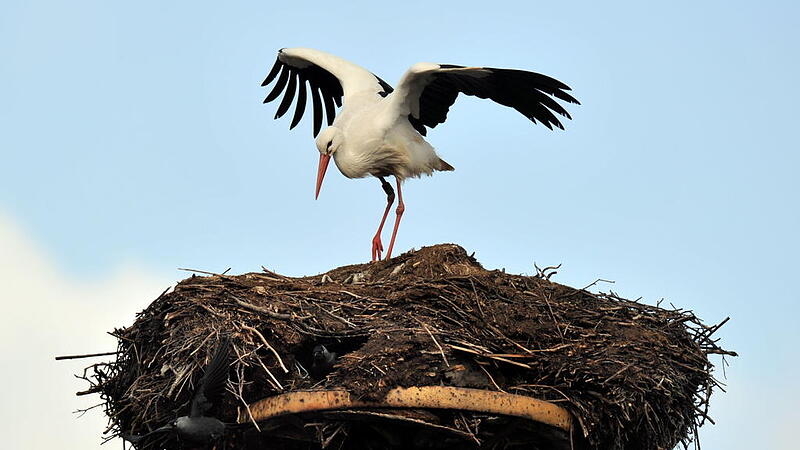Image: dpa
This summer, 92 breeding pairs were counted, raising 186 young birds, Klaus Zimmermann from Dornbirn’s Inatura Natural History Museum told the APA. The majority of them now overwinter here, a consequence of climate change. In the 1980s, storks were still a rare sight in the Rhine Valley. In 2009, ten breeding pairs were counted for the first time.
- Also read: Why storks are increasingly staying in Upper Austria in winter
Since then, the stork population in the country has been “rising steeply,” says Zimmermann. Thirty years ago there was still a stork’s nest in the country, but the long-legged birds can now be seen in many places in the Rhine Valley. According to the biologist, the fact that more and more of them are staying in Vorarlberg over the winter is a clear consequence of climate change: if the ground is frozen for a long time, the storks cannot find food. But that is hardly the case in the Rhine Valley anymore. “If there is an exceptional cold winter, some storks are likely to fall victim. But that would not change their basic tendency to stay here over the winter,” explained Zimmermann. The exact number of storks overwintering in the country is recorded every January.
Young animals head south
What’s exciting for Zimmermann is that some young animals move south even though their parents stay where they are. It was actually assumed that this behavior was passed on from the parents to the young. But that is apparently not necessarily the case. And while the storks used to all migrate to areas south of the Sahara, some have now discovered the advantages of overwintering in Spain or Portugal: the flight is shorter and therefore less time-consuming and energy-sapping, and the shorter route means they are back in Austria sooner. which gives them a head start when looking for good breeding sites.
Problem for amphibian and reptile populations
While it is of course pleasing that the stork is now at home again in Vorarlberg, from the biologist’s point of view it should also be borne in mind that the birds in large numbers can definitely harm the amphibian and reptile populations. There can also be difficulties with the animals’ nests: over 30 had to be cleared away this year – with the necessary official approval. If possible, storks stay with the same partner throughout their lives and return to the nest from the previous year with them in the spring. This is then “furnished”, as Zimmermann puts it, and can eventually weigh up to two tons – and that can sometimes be too heavy for an electricity pylon or a house roof.
My themes
For your saved topics were
new articles found.

info By clicking on the icon you can add the keyword to your topics.
info
By clicking on the icon you open your “my topics” page. They have of 15 keywords saved and would have to remove keywords.
info By clicking on the icon you can remove the keyword from your topics.
Add the topic to your topics.
Source: Nachrichten




